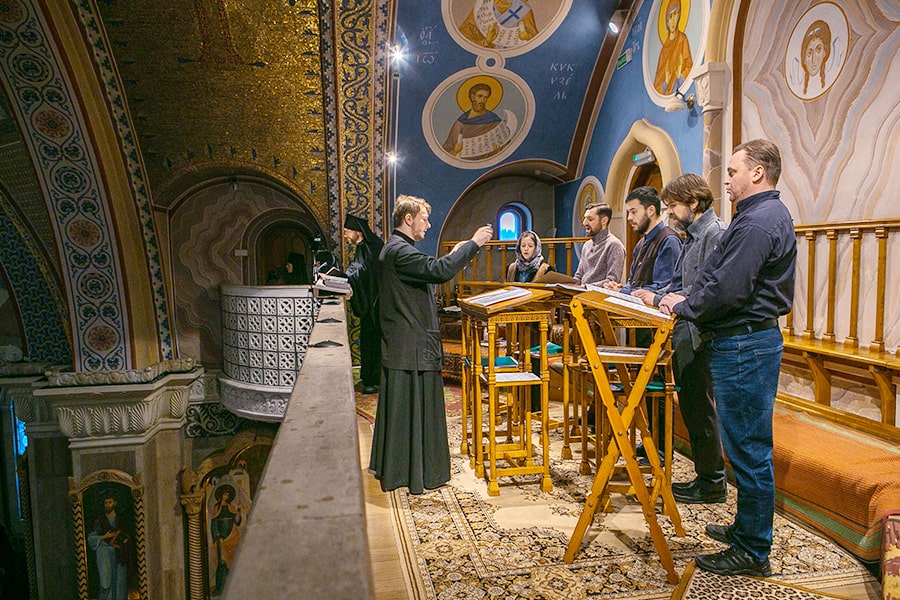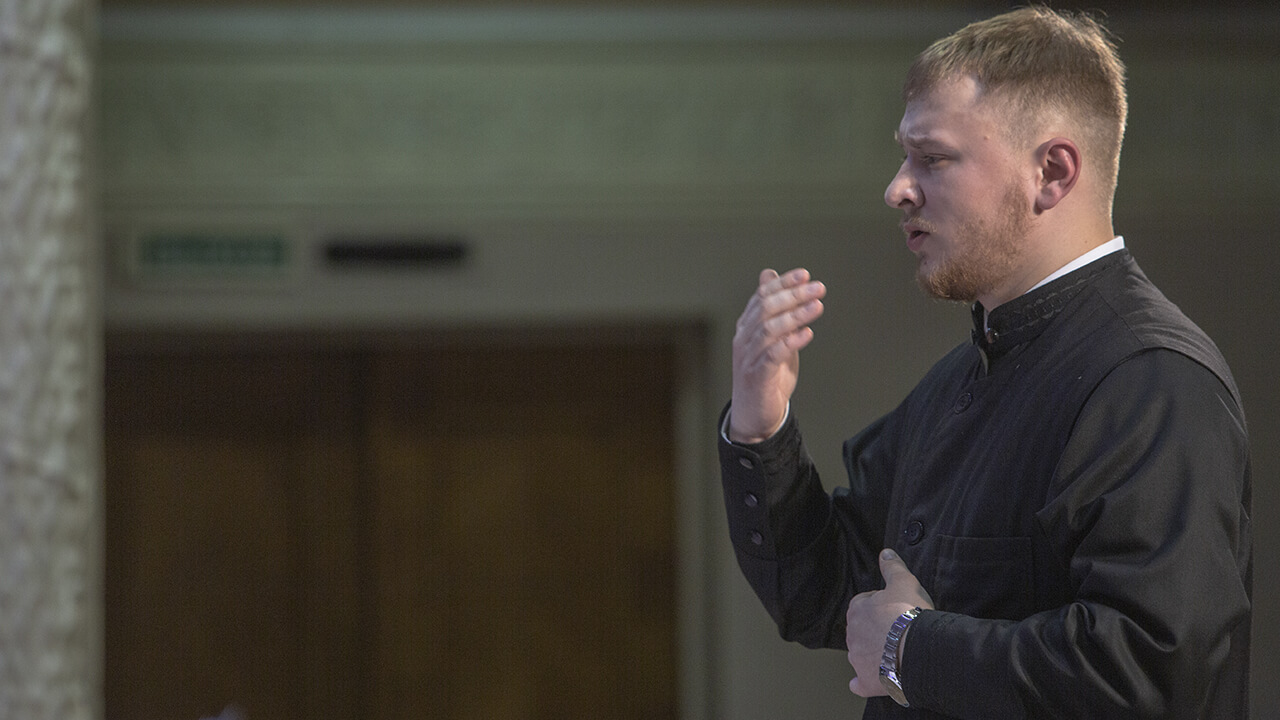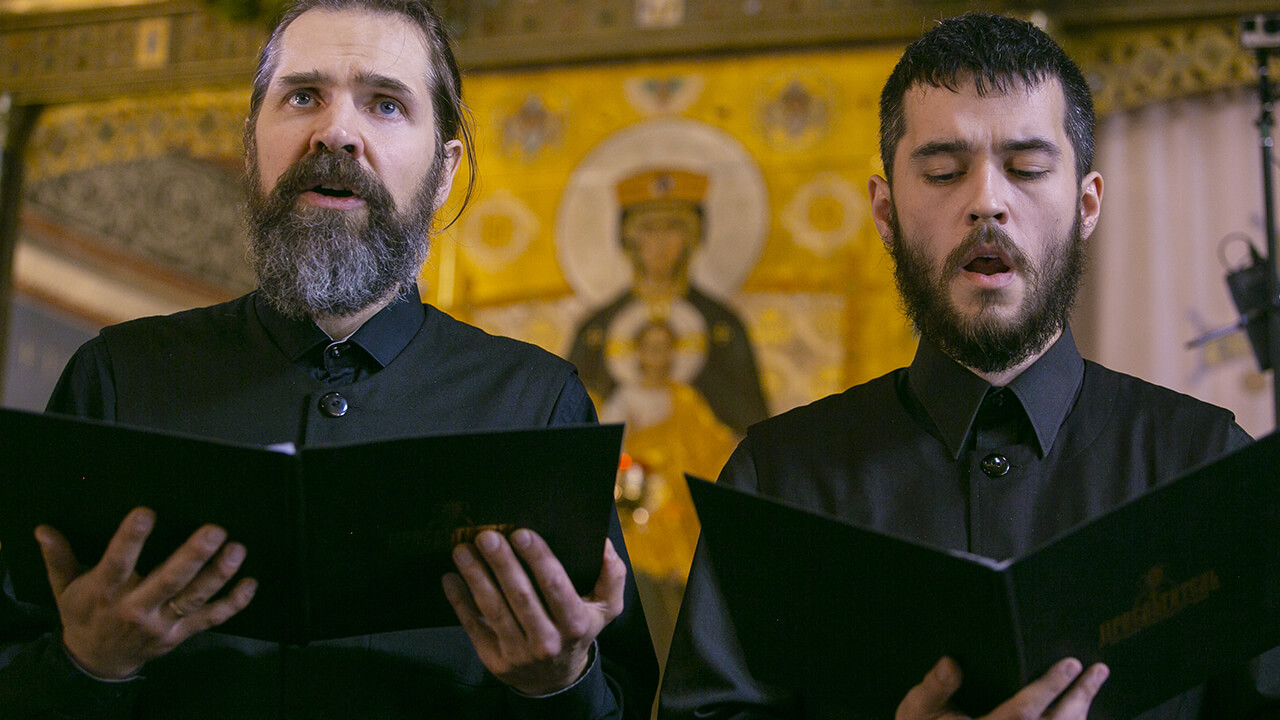
It is well known that one can barely hear part choral singing in St Elisabeth Convent. A while back nun Martha (Guskova), the first precentor in the Convent, made a trip to the Isle of Valaam and was really impressed by the true beauty, simplicity and prayerful spirit of the singing. She decided to adopt this spirit and manner of performance and apply them in her monastery. Nineteen years have passed since then, but the Valaam chant “reigns” in the Convent to this very day. We decided to interview the precentor of the Brothers’ Choir of St Elisabeth Convent to learn more details about the way of church singing in the Convent today.
Brother Evgeny, what is the Valaam chant like in the Convent today?
We use the modern singing practice of the Valaam monastery. A group of singers chant the melody and the rest of the choir sustain the ison. Thus a special harmony is achieved: neither part-singing nor dull monophony. As you know, harmony indicates modal affiliation, which in its turn brings colour to music. In other words, we can translate any mood: happy or sad, joyful or melancholic.
You’ve touched upon the notion of “ison”. Could you explain what this is and how you sing it? If I’m not mistaken, this is where creativity begins?
Yes, absolutely, just as on the Isle of Valaam, in our Convent the ison is composed by a precentor himself at his discretion. In general terms, ison is a melody which determines modal affiliation of the main chant. Naturally, we try to stick to a commonly used Valaam ison, but it often happens so that we come across a self-sufficient melody which must be “coloured” with the help of an ison. At least I think it would be more beautiful and interesting to chant it this way! So here starts creativity. Surely, if we compose an ison, we make it sound as close to the Valaam ison as possible. This way of chanting has settled in in our Convent’s tradition.
Brother Evgeny, could you dwell on what the Valaam chant, or descant, is, when it appeared and why you use this very chant?
Because such a manner of singing is best for prayer, for the singer himself. Church singing came to the lands of Rus from the Eastern countries (Greece, Bulgaria) around the 11th century. But it’s only fair that after getting on the Slavic lands and mixing with the Russian traditional singing the chants transformed, and church music became different melody-wise. Thus, by the early 20th century an independent, self-sufficient Valaam chant has formed on the basis of the Znamenny chant. However, some bits and pieces of the original sound can still be heard nowadays.

Please explain the difference between a chant and a descant.
As a matter of fact, descants appear under the influence of local traditions. For instance, some psalms of Znamenny chant in this or that church are sung in this particular manner, and in a church in a different region, this very melody may be chanted a bit differently. It happens so that church singers – unintentionally most of the time – contribute something of their own to a chant. Archpriest Boris Nikolaev comments on this topic as follows: “If one finds a part of the chant difficult, he simplifies it without a doubt, i.e. either alters the part he can’t find his way around, or (and this happens more often) skips a whole range of intricate clusters of kryuki and replaces it with a simple passage of one or two notes of his own composition.” In other words, the singers sometimes “cut corners” and simplify a chant. Sometimes – the other way round.
As far as I know, there are four choirs in St Elisabeth Convent! Do all of them really sing ancient chants and two-part melodies?
The choirs in our Convent are magnificent, they suit any taste! But not all of them use two-part singing. Our Festive choir conducted by nun Juliania (Denisova) sings ancient chants (Byzantine, Valaam) which are harmonized especially for this choir. In other words, one hears the original melody as well as the chord. There’s also the Brothers’ choir which I’m a precentor of. We try to be authentic and mimic the Valaam monastery sound and manner of performance. This approach is used by the choir of sisters of mercy “Raduysya” (“Rejoice”). And of course, there’s the main choir of the convent – the choir of monastic sisters. They use the Valaam descant for singing at all services of the church year. Yes, you heard right – the Valaam descant, not the chant, because our own “St Elisabeth” singing tradition has been gradually shaping up on the basis of the Valaam tradition.

Can one listen to the monastic choir singing anywhere apart from the Convent?
To tell the truth, the choir of monastic sisters sings only at services and almost never performs outside the Convent’s churches. However, about two times a year sisters travel to several European cities with charitable concerts. Berlin, London, Dublin, Brussels have already seen the sisters sing and enlighten unchurched, faithless people. By the way, at the end of September, the Ensemble of our sisters will once again come to Great Britain with a charitable tour. We heartily invite all of our friends to these concerts!
One last question. How can one become part of a Convent’s choir?
One cannot just come and start singing, it’s a matter of hard work, learning and growing. And of course – practice makes perfect.
It’s is highly important to understand why you have joined a church choir, what it means to you personally. Possessing talent and aptitude is surely very good, but from my own experience, I can tell: if there’s no humbleness and obedience, if one doesn’t understand that all of it is about spiritual doing – no good will come out of it. One just has to realize, Whom we serve and to Whom we sing.